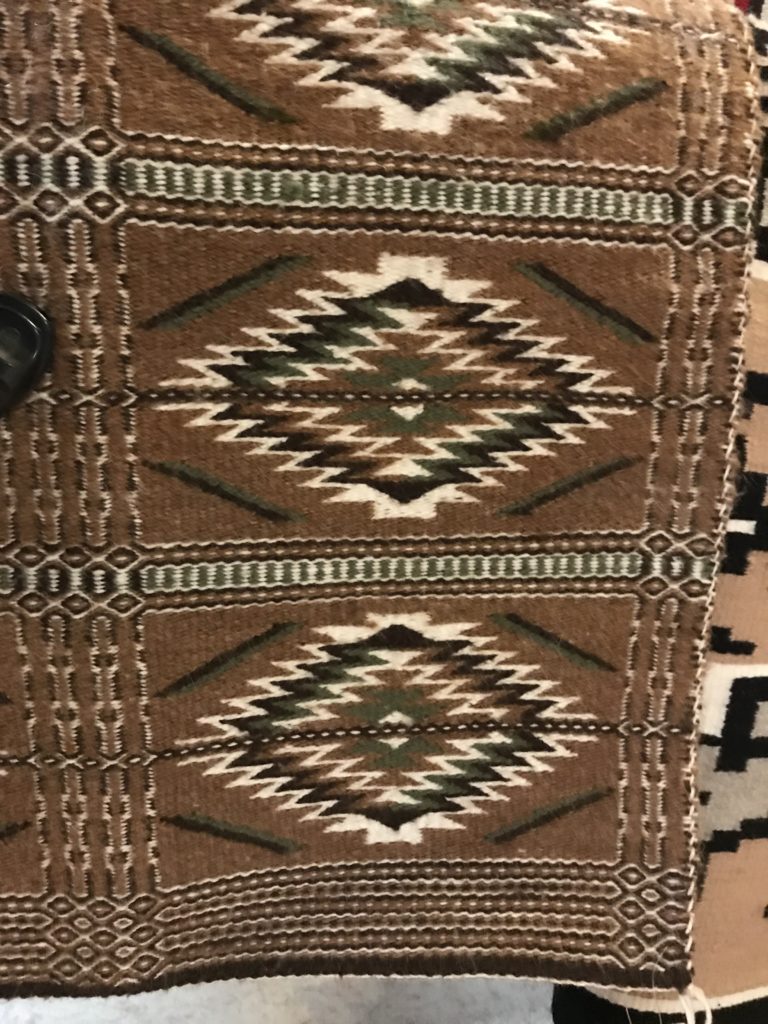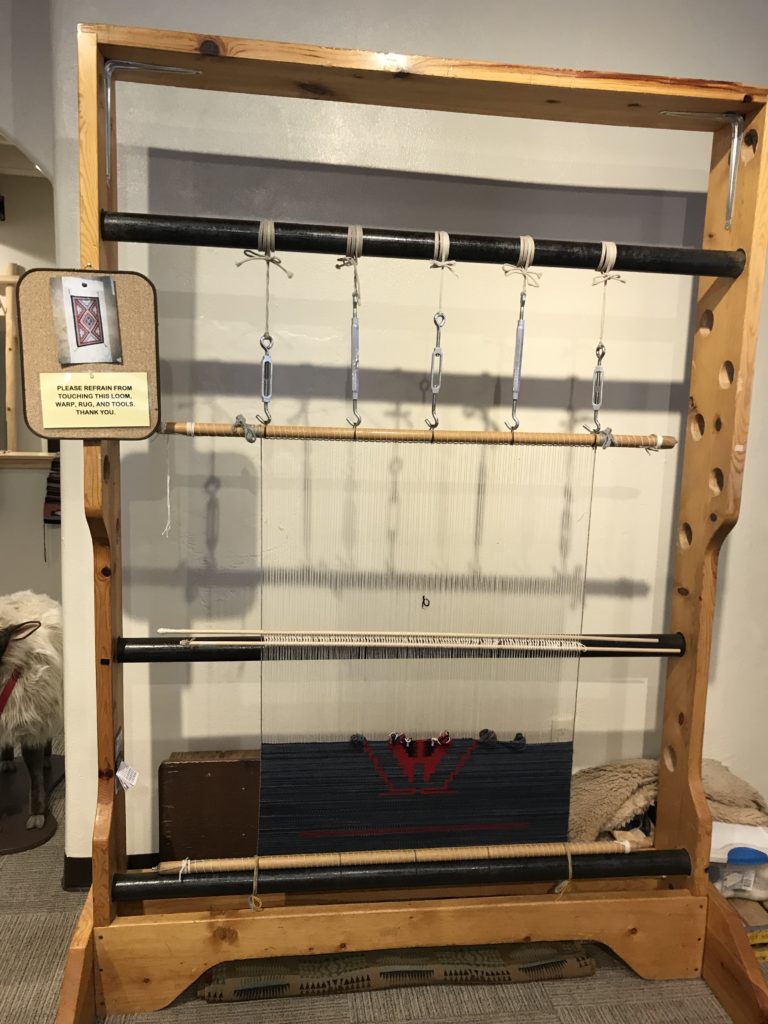As I mentioned yesterday, today I am going to write about Navajo-Churro Sheep and the Navajo Weaving produced from their wool. I got interested in Navajo Weaving while I was at Pipe Spring. Lots of visitors would tell me they had watched someone weaving on a Navajo Loom. At Pipe Spring I used a floor loom with lots of moving parts. Navajo Looms are much simpler, vertical looms, and yet the weaving produced on these looms are works of art.
When the Spanish set out to conquer the southwest, the Navajo were both allies and enemies. When the Spanish tried to conquer the Puebloans, the Navajo helped the Spanish. But when the Spanish tried to confine the Navajo and put an end to their raiding parties, the Spanish became enemies.
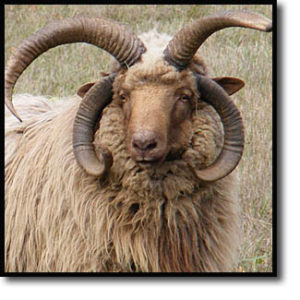 As the Spanish moved into the southwest, they brought with them herds of Iberian Churra sheep. The sheep served as a food source and a source of clothing for Spanish soldiers and settlers. The Navajo quickly saw the usefulness of herds of sheep and traded and stole flocks of sheep from the Spanish. By 1600, Navajo had large flocks of sheep and their weaving traditions began.
As the Spanish moved into the southwest, they brought with them herds of Iberian Churra sheep. The sheep served as a food source and a source of clothing for Spanish soldiers and settlers. The Navajo quickly saw the usefulness of herds of sheep and traded and stole flocks of sheep from the Spanish. By 1600, Navajo had large flocks of sheep and their weaving traditions began.
Navajo-Churro sheep are well adapted to the southwestern climate. They are hardy and healthy and give birth easily, often having twins or triplets. Their have a coarse, thick outer coat of straight hair, and a curlier, softer undercoat. Both of these coats protect them from heat, cold, predators, and cacti.
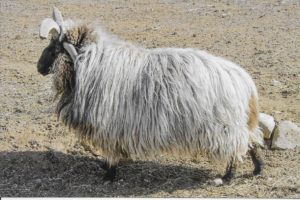 The outer coat of the Navajo-Churro sheep is particularly well adapted for handweaving heavy rugs and blankets. The coarse hair is straight and strong without lanolin. The undercoat is better for softer clothing but difficult to spin with its shorter staple. The Navajo traditionally used a Navajo spindle to spin the hair into yarn for weaving. And the Navajo-Churro fleece has a variety of colors – white, black, brown, and reddish – which lend the yarn to the strong geometric patterns of Navajo weaving.
The outer coat of the Navajo-Churro sheep is particularly well adapted for handweaving heavy rugs and blankets. The coarse hair is straight and strong without lanolin. The undercoat is better for softer clothing but difficult to spin with its shorter staple. The Navajo traditionally used a Navajo spindle to spin the hair into yarn for weaving. And the Navajo-Churro fleece has a variety of colors – white, black, brown, and reddish – which lend the yarn to the strong geometric patterns of Navajo weaving.
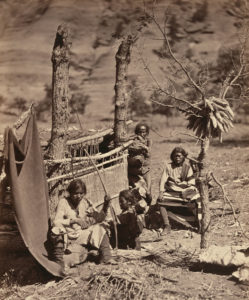
During the early 20th century, the Navajo-Churro breed almost disappeared due to crossbreeding. This almost led to the end of traditional Navajo weaving because other kinds of fleece are not suited to handspinning or weaving on the Navajo loom. Although the breed has “threatened” status today, enough purebred Navajo-Churro were found in remote areas of the Navajo reservation to allow the breed to survive.
I am fascinated by the Navajo-Churro sheep story because it represents the adaptability the Native Americans needed to survive. They what they could of western culture and made it serve their own needs. Weaving the rugs for tourists and art collectors has helped the Navajo flourish in their traditions.


